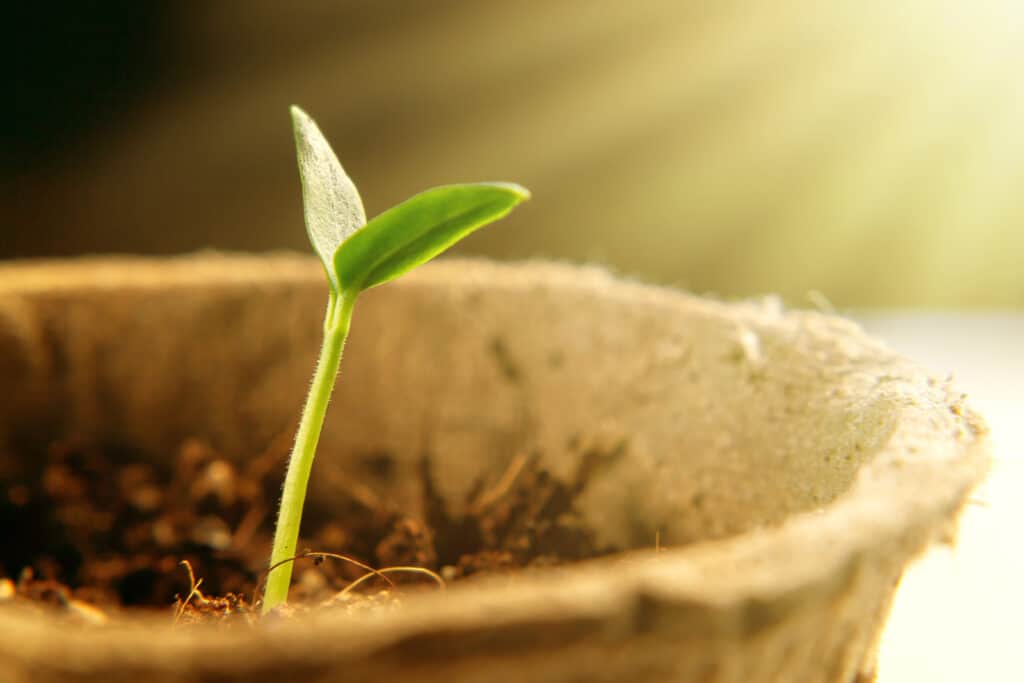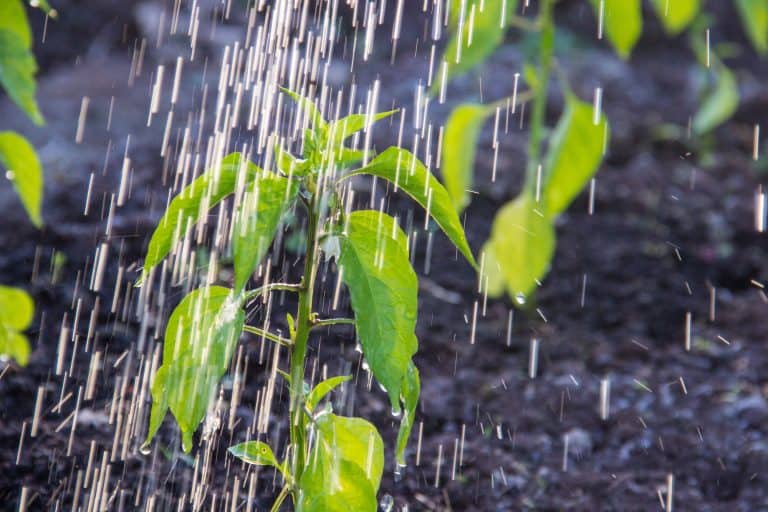Troubleshooting pepper plants that aren’t growing
Are you an adventurous foodie looking to expand your pepper palate beyond the limited selection found in typical grocery stores? Growing your own peppers can be an exciting and rewarding venture, allowing you to explore a wide variety of flavors and heat levels.
However, it can be incredibly disheartening when your pepper plants fail to thrive despite your dedicated time and care.
Don’t worry! In this article, I will guide you through troubleshooting the issues that may be hindering the growth of your pepper plants. By observing the symptoms exhibited by your plants, I’ll help you diagnose the problems and provide solutions to get your pepper plants back on track and ensure an abundant harvest.
Note: This article contains affiliate links, which means that if you click and purchase, we may earn a small commission at no extra cost to you. Thank you for supporting our content!
What to do if your pepper seeds aren’t sprouting
The first step to growing peppers is getting your seeds to sprout (or germinate). Because this is just the start of your journey, it can be extremely discouraging when your seeds don’t want to sprout!
Germination time varies by pepper variety
When embarking on your pepper-growing journey, finding that your seeds are not sprouting as expected can be disheartening. Typically, most pepper seeds will germinate within 7 to 10 days if the conditions are right. However, it’s important to note that certain super-hot pepper varieties, such as ghost and scorpion peppers, may require a more extended germination period, sometimes up to 6 weeks.
Peppers need a lot of heat to germinate!
One common reason for seeds not sprouting is if the temperature is too cold. Peppers need more heat to germinate than other seeds you may be starting, like lettuce, broccoli, and tomatoes.
The optimal soil temperature for pepper seed germination is 75-85 degrees F, which is probably warmer than your home naturally is! Using a heating mat can help speed pepper germination, or you can try using space heaters or baseboard heaters in the room where you are starting your seeds.
What you need to know about germination rates
If you only planted one pepper seed, it’s important to know that it’s completely normal if not every single seed sprouts. So if you only need one pepper plant, starting at least two or three seeds ensures that something will sprout even without 100% germination.
Most reliable seed companies will provide their most recent germination rate data on the seed packet or online. For example, if the seeds have an 87% germination rate, that means that if you plant 10 seeds, at least 8 should sprout.
However, there are plenty of unreliable seed sellers out there, so seed quality and germination rates may be the cause of your issues if you bought your seeds from an unreliable source (like a no-name brand from Amazon.) I buy my seeds from companies like Pepper Joe’s, Botanical Interests, and Seed Savers Exchange and have not had issues with germination rates.
The age of the seeds can also contribute to germination rate issues. Over time, the germination rates of seeds naturally decrease. Therefore, if your seeds are more than 3 or 4 years old, they may have a lower chance of successful germination. If you know your seeds are several years old, try buying new ones to ensure better results.
Too late to start again?
Don’t lose hope if your seeds seem unresponsive and you’re concerned about their viability. There are alternatives to starting from seeds. Try your local nursery or hardware store for common peppers like bell, jalapeño, and habanero. If you’re looking for specialty peppers, you can order seedlings online from trusted suppliers like Pepper Joe’s. This way, you can bypass the germination stage and have young pepper plants ready to transplant into your garden or containers.
What to do when your seedlings are struggling
Congratulations on successfully sprouting your pepper seeds! However, a few factors must be considered if your seedlings are showing little growth.

They may not have enough light
One common cause of slow growth is a lack of adequate sunlight. Ensure your seedlings receive at least 12 hours of sunlight or artificial light each day. If they are struggling, consider providing even more light (up to 16 hours daily).
A key indication of insufficient light is legginess—tall and skinny plants without developing more leaves, often leaning towards the light source. Windows alone may not provide enough sunlight, so grow lights are recommended. Ensure that the grow lights are positioned 3-4 inches above the seedlings, and if necessary, consider adding more lights to enhance growth.
They may not have enough nutrients
The soil in which you started your seedlings may lack essential nutrients, leading to stunted growth. Look for signs such as yellowing leaves and leaf drop, indicating nutrient deficiencies. Peat moss alone may not provide the necessary nutrients for seedling growth.
If you suspect a nutrient deficiency, consider fertilizing your seedlings or transferring them to pots with more nutrient-dense soil if they are strong enough.
Typically, waiting until the seedlings have 1-2 sets of true leaves before up-potting is advisable. However, if the plant is already struggling, up-potting earlier may be beneficial.
Be cautious when using fertilizers because overdoing it with young seedlings is easy. Use a nitrogen-rich fertilizer, and check and see if they recommend a specific dilution for seedlings. If they don’t provide a recommendation, start by using half-strength, diluting with twice as much water as they recommend for adult plants. I use Fox Farms liquid fertilizers for my seedlings, and they provide dilution rates for seedlings.
You may be overwatering
Overwatering is a common issue new pepper growers encounter and can impede growth. Symptoms of overwatering include curling leaves, leaf drop, root rot, and damping off (fungus). Consider bottom-watering your seedlings instead of pouring water on top of the plants. Water only when the top layer of soil feels dry to the touch, rather than watering daily. Introducing an oscillating fan near the peppers can also help prevent damping off.
You may need to up-pot your seedlings
If your seedlings initially show progress with a few sets of true leaves but then experience stalled growth, they may have outgrown their current containers.
After approximately three weeks, consider up-sizing the containers to 3-inch pots, ensuring you use nutrient-dense potting soil during the transfer.
If the growth stalls again after 6-8 weeks and you are still unable to plant them outdoors, further up-potting to containers around 6 inches in size may be necessary. This is also true if you have multiple seedlings in a single cell—thin out each cell to leave only one seedling or transplant and separate them.
Delayed growth after transplanting
Transplanting your pepper plants outdoors is an exciting milestone, and it’s natural to expect immediate explosive growth, so it can be disappointing when you don’t see noticeable growth. The good news is that noticeable change typically takes a few weeks to kick in, so don’t worry!
Pepper plants first grow down, not up
After transplanting, your pepper plants will naturally focus their energy on establishing a strong root system. During this initial period, they channel their energy into anchoring themselves in the new soil and absorbing nutrients and water. This investment in root development will eventually lead to healthier and more vigorous above-ground growth.
Low overnight temperatures might be to blame
Peppers should not be transplanted outdoors until nighttime temperatures are reliably above 50 degrees Fahrenheit. However, mother nature can be unpredictable, so temperatures may dip again after you plant out.
Slower or stunted growth is expected if the temperature drops below 50 degrees Fahrenheit (10 degrees Celsius). As long as the temperatures don’t drop dangerously low, growth should resume soon after nighttime temperatures warm back up.
However, if the temperature dips below 45 degrees Fahrenheit (7 degrees Celsius), consider protecting your plants by covering them with a frost blanket. This will help safeguard them from damage caused by the cold and promote healthier growth once temperatures become more favorable.
Stunted growth with yellowing leaves
Yellowing leaves on pepper plants typically indicate a nutrient deficiency or water stress.
Water stress can arise from over or under-watering, so striking a balance is essential. Even if you’re not excessively watering, inadequate drainage can still cause waterlogging of the roots. On the other hand, if the leaves are yellowing and also wilting, you may not be watering enough.
Nutrient deficiencies like a lack of nitrogen, magnesium, or calcium can also cause yellowing of the leaves. Consider applying a fertilizer such as Fox Farm’s Grow Big to address these issues. If you don’t have fertilizers on hand, you can incorporate finished compost, compost tea, or worm castings to boost the nutrient.
My pepper plants aren’t growing big, even weeks after transplanting
If you transplanted your pepper plants more than four weeks ago and noticed some initial growth, but now they appear stunted, several factors may be at play.
Your plant may already be at its mature size
Depending on the variety, there is a wide variation in the natural size of mature pepper plants, so it’s crucial to understand the expected size of the pepper plant variety you are growing. For example, some pepper plants naturally only grow to be a foot high, while others can reach impressive heights of 9 or 10 feet tall.
If your plants are short and compact, it may be a warning sign that something is wrong or simply mean that the plant has reached full maturity.
Consult the specific variety of pepper you are growing to determine its projected height at full maturity. Here’s a quick overview of common pepper varieties:
- Bell peppers: 2-4 feet tall
- Jalapeños: 2-3 feet tall
- Cayenne: 18 inches – 2 feet tall
- Habanero: 3-5 feet tall
- Ghost pepper: up to 4 feet tall
Refer to the seed packet for information on the expected height of your particular plant variety. If the information is unavailable, a quick Google search can provide details about the specific pepper variety you are cultivating.
Inspect the leaves and stems, checking for signs such as yellowing leaves, wilting, disease (such as leaf spots or discoloration), and leaf curl.
Look for symptoms in addition to stunted growth
If there’s something wrong with your plant, there are usually additional symptoms beyond stunted growth that can help you identify the problem. Thoroughly inspect all parts of the plant, including leaves, stems, the base, and fruit, looking for signs like yellowing leaves, wilting, spots, and insects. Pests can sometimes be tiny and easily overlooked, so inspect the entire plant closely.
Address competition for resources
If your pepper plants are growing too close together, they may be vying for resources, impeding their growth. Ideally, pepper plants should be spaced at least 12 inches apart, but 18 inches is even better. Providing ample space allows each plant to access sufficient sunlight, nutrients, and water, fostering healthy growth and development.
By carefully assessing plant symptoms and pest presence, addressing competition for resources, and understanding the expected size of your pepper plants, you can take appropriate measures to encourage healthy growth and ensure your peppers reach their full potential.
My pepper plant isn’t flowering
Several factors could be at play when your pepper plants fail to produce flowers. Understanding and addressing these factors will help encourage the flowering process and increase your chances of a bountiful harvest.
Heat and sunlight can both impact flowering
Insufficient heat is a common culprit behind pepper plants not flowering. Most pepper varieties thrive in temperatures between 70 to 85 degrees Fahrenheit (21 to 29 degrees Celsius) for optimal flower and fruit production. It’s important to note that if nighttime temperatures dip below 60 degrees Fahrenheit (15 degrees Celsius), even if the daytime temperatures are warm, your plants may struggle to initiate flowering. Ensure your pepper plants are placed in a warm location that provides the necessary heat for their growth.
Furthermore, pepper plants require a minimum of 6 hours of direct sunlight daily to trigger the flowering process. Inadequate sunlight can hinder the plant’s ability to produce flowers. Therefore, evaluate the positioning of your plants and make any necessary adjustments to ensure they receive sufficient sunlight exposure.
Is it a nutrient deficiency?
A lack of essential nutrients, particularly nitrogen, and potassium, can also hinder the flowering of pepper plants. These nutrients are vital in promoting overall plant health and flower development. Ensure your plants receive a balanced diet by incorporating a suitable fertilizer into their care routine. Choose a fertilizer specifically formulated for vegetables or peppers, as it will provide the necessary nutrients to support robust flowering.
Competition and airflow
Competition for resources, whether due to close spacing or excessive weed growth, can impede the flowering process of your pepper plants. Overcrowded conditions restrict air circulation and limit access to sunlight, ultimately inhibiting the plant’s ability to produce flowers.
Maintain proper spacing between your pepper plants, allowing them ample room to grow and thrive. Regularly remove weeds that can compete for nutrients and resources, ensuring your peppers have the best possible environment for flowering and fruiting.
The flowers are falling off without producing fruit
If you notice that the flowers on your pepper plants are falling off without producing any fruit, there are a few factors to consider. While it’s not uncommon for some flowers to naturally drop without fruiting, addressing potential issues to maximize fruit production is essential.
Some flower drop is natural and expected
First and foremost, it’s important to note that not every single flower will develop into a fruit. Some natural flower drop is a normal part of the pepper plant’s reproductive process. Therefore, it is normal to see a certain percentage of flowers falling off without yielding fruit.
Troubleshoot temperature and growing conditions
Excessive heat can hinder fruit production in pepper plants. Although most peppers thrive in warm conditions, temperatures above 100 degrees Fahrenheit (38 degrees Celsius) can challenge fruit development.
If you suspect high temperatures are affecting your pepper plants, consider providing them with some shade during the hottest part of the day. If your plants are in containers or bags, relocating them to a shadier spot can help. Alternatively, hanging a shade cloth above your plants can provide the necessary relief from intense sunlight.
Pollination may be an issue
Pepper plants are capable of self-pollination, but they can also benefit from the assistance of pollinators like bees. If your garden lacks pollinators or experiences minimal wind movement, your plants may encounter difficulties achieving successful pollination.
To overcome this, you can lend a hand in the pollination process by gently shaking the plant can help disperse pollen and facilitate self-pollination. If your plants are indoors, placing a fan nearby to create gentle airflow can mimic the effects of natural wind and aid in pollination.
Growing peppers comes with its share of challenges, but you can overcome them with the right knowledge. Whether it’s troubleshooting seed germination, promoting healthy seedling growth, addressing transplanting issues, ensuring proper flowering and fruiting, providing optimal growing conditions, addressing nutrient deficiencies, and aiding pollination, it will allow you to nurture robust pepper plants.
Remember, each setback is an opportunity to learn and grow, so don’t be discouraged if you don’t get it right the first time!






